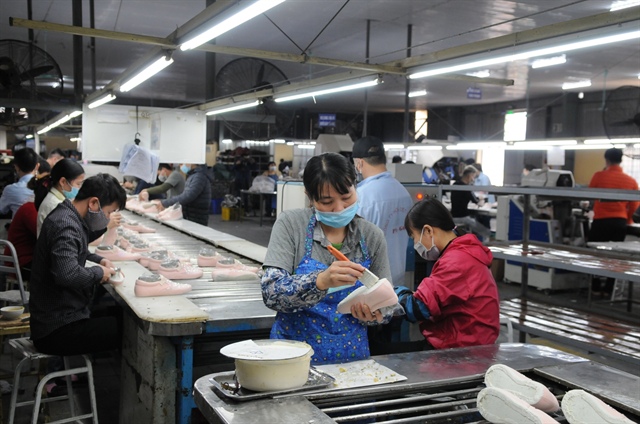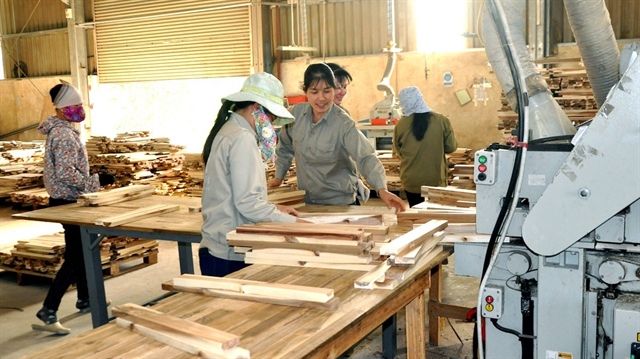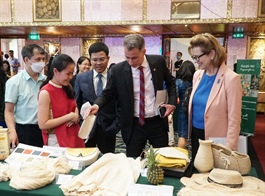EVFTA implementation: Promising beginnings
EVFTA implementation: Promising beginnings
The EU-Vietnam Free Trade Agreement (EVFTA), in effect since August 1, 2020, is the EU’s most ambitious trade pact with a developing country, stipulating the removal of 99 percent of tariff lines within 10 years.
Initial results
The EVFTA came into force as the COVID-19 pandemic started disrupting global trade. In terms of value, the first seven months of the EVFTA (August 2020-February 2021) saw the weakest trade performance of the same period in the preceding five years. In particular, the value of EU exports to Vietnam dropped 10 percent. However, EU exports to Vietnam rose 40 percent in terms of volume and exports from Vietnam to the EU increased 6.8 percent.
In the seven months post-EVFTA, EU-Vietnam trade outperformed overall EU trade with other countries outside Europe. The EU’s exports to Vietnam fell 10 percent, while its exports to third countries dropped 19 percent. Similarly, EU imports from Vietnam increased two percent, in contrast to a 10 percent drop in global extra-EU imports. EU trade has performed better with Vietnam than with other Southeast Asian countries, with the exception of a slight lead in exports from Malaysia.
Trade between the EU and Vietnam has grown consistently over the past several years, surpassing Singapore in 2021 to become the EU’s largest Southeast Asian trade partner.

Vietnam’s footwear exports to the EU reached almost US$1.8 billion in the first four months of 2022, up 19 percent from the same period last year |
Recovering demand
In the long term, the EVFTA should enable EU companies to prepare for major structural changes in the global supply chain. For example, the rule of origin introduced under the EVFTA is likely to motivate Vietnam to restructure its textile manufacturing industry in order to reduce its heavy dependence on Chinese raw materials (58 percent), and better benefit from the agreement.
Indeed, the preferential tariffs under the EVFTA apply not only to textile materials from the EU and Vietnam, but also from ASEAN (the Association of Southeast Asian nations) and the Republic of Korea (RoK). That could strengthen trade links between the RoK and the EU via Vietnam in the textile sector, especially since the RoK is Vietnam's second-largest textile supplier. The RoK accounts for around 16 percent of Vietnam's total imports in this sector.
Regarding the regionalization of supply chains, the EVFTA and the other free trade agreements that the EU has signed with major Asian economies, namely Japan, the RoK, and Singapore, together provide the EU with institutional leeway to engage in the increasingly integrated intra-Asian market. In the textile sector, the EU’s fully liberalized exports to Vietnam under the EVFTA provide it with an advantageous position in exporting luxury and technical textile materials to meet the fast-growing Asian demand.

Vietnam has ample opportunities to boost exports of wooden products and furniture to the EU in the post-pandemic period |
Growing logistics opportunities
The great potential in EU-Vietnam trade also means growing investment opportunities in the Vietnamese logistics sector, which is in line with Vietnam's ambition to become a regional logistics hub by 2025. The FTA and the EU-Vietnam Investment Protection Agreement enable the EU to provide various maritime transportation services, including shipping agent services, cargo/container handling, storage, and warehousing.
Furthermore, the positive outlook for EU-Vietnam trade is likely to generate new demand in multimodal shipping (rail-ocean freight). The previously mainly conceptual Southeast Asia-Europe multimodal solution via China now seems more than likely to become an actual offer in the market. For instance, DHL is already offering a multimodal shipping connection from Hanoi via China (Chengdu/Shenzhen) to Poland and Germany. Similarly, Nippon Express has started offering China-Europe rail freight from Suzhou to Hamburg and Duisburg, and China-Southeast Asia rail freight from Suzhou to Hanoi.
In the first quarter of 2021, rail-ocean freight volumes between China and South-East Asia grew 88.5 percent to reach 66,292 TEUs. Volumes between China and Europe also continued to grow in double digits, with an 84 percent increase in the same period. However, the congestion and shortage of containers for rail freight since 2020 indicates a discrepancy between infrastructure capacity and demand, which could hamper the dynamics of this shipping connection.
| Vietnam’s Ministry of Planning and Investment forecast a 42.7 percent increase in Vietnamese exports to the EU by 2025 under the EU-Vietnam Free Trade Agreement. The European Commission forecast a 29 percent growth in EU exports to Vietnam by 2035. |


























